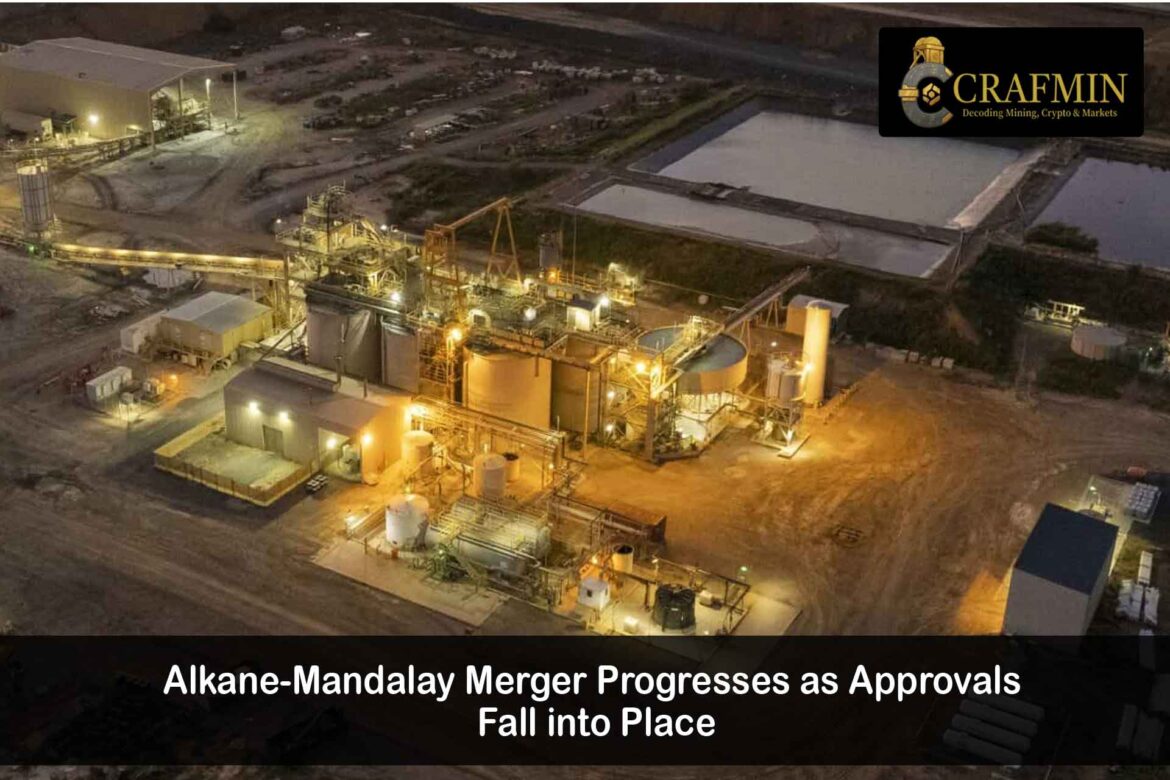
Source: Discovery Alert
The mining industry is well-acquainted with bold agreements, yet the suggested merger of Alkane Resources and Mandalay Resources is one that could truly transform the environment for gold and antimony production in Australia. Following months of preparation, the businesses have overcome two significant obstacles: regulatory endorsement and shareholder agreement
FIRB Approval Clears a Path
In a significant development, Australia’s Foreign Investment Review Board (FIRB) has given its blessing to the merger. That means Alkane can proceed with acquiring Mandalay’s outstanding shares without facing obstacles on the foreign investment front.
This approval wasn’t just a procedural formality. Given antimony’s increasing importance in energy storage and defence applications, securing FIRB clearance signals that the transaction aligns with Australia’s strategic interests.
Shareholders Give the Thumbs-Up
The deal also won the backing of shareholders from both companies. During meetings conducted earlier this month, investors widely supported the plan for Alkane to take over Mandalay’s operations. The atmosphere was positive, with directors highlighting the potential for increased production, lower expenses, and improved exploration ability as major factors for backing the decision. After the vote, one shareholder encapsulated the feeling:
“This isn’t just about getting bigger. It’s about building a business that can withstand the ups and downs of the commodities market.”
A Strategic Play, Not Just a Merger of Convenience
It’s easy to view mergers through the lens of balance sheets and production targets. But this deal reflects a broader vision. By combining forces, Alkane and Mandalay aim to create a company with a stronger footing in gold, while adding meaningful scale in antimony — a metal increasingly seen as vital for future technologies.
This isn’t a case of two companies simply pooling resources to stay afloat. It’s a calculated move to form a miner that can hold its own in a competitive global market, with assets that complement rather than overlap.
What’s Still Ahead?
Winning shareholder support and regulatory clearance are big steps, but the merger journey isn’t over yet. The deal now moves into its final phase, where legal formalities — including court sign-off on the arrangement — must be completed before everything becomes official.
Meanwhile, behind the scenes, teams from both Alkane and Mandalay are already mapping out how to blend their operations, systems, and workforces. The focus is on making sure the transition is as seamless as possible, with minimal disruption on the ground.
If all goes to plan, the merger should be finalised sometime in the next quarter. Of course, as with any deal of this scale, there’s always the chance of unexpected delays — but for now, the pieces are falling into place.
Why This Merger Stands Out
In a market where mining mergers often focus purely on scale, the Alkane-Mandalay combination stands out for its strategic intent. The companies have complementary strengths — Alkane with its track record in project delivery, Mandalay with its established antimony output.
There’s also a timing element. With global supply chains for strategic minerals under pressure and governments looking to secure critical inputs, the merged company is well-positioned to benefit.
Industry Reaction
Market analysts have generally welcomed the news, with some noting that the merger could act as a blueprint for other mid-tier miners looking to strengthen their hand through smart consolidation.
“It’s not just about size,” one Sydney-based resources analyst observed. “This is about creating a business with more resilience and optionality in its portfolio.”
Final Word
The proposed merger between Alkane and Mandalay has cleared its biggest early tests. With both investors and regulators backing the plan, attention now turns to delivering on what’s been promised. That means not just combining assets, but building a company that can handle market cycles, strengthen supply chains, and add value where it counts.
There’s still work ahead — legal steps to finalise, and plenty of practical challenges in blending two operations. But if the process so far is any guide, the foundations are solid. Now it’s a matter of turning a well-designed plan into results that last.
For further updates, including court approvals and integration milestones, follow our mining sector newsfeed.

